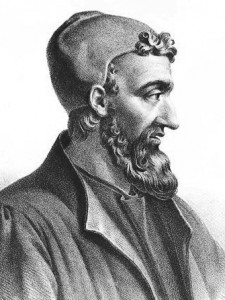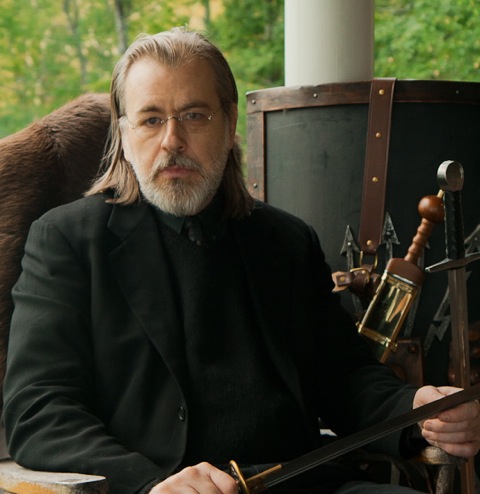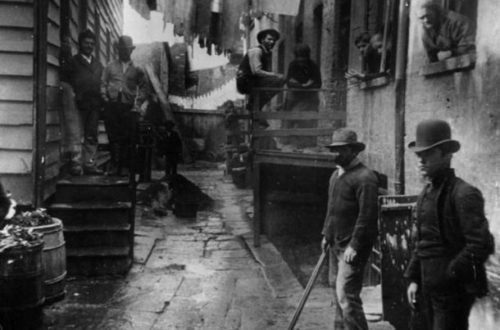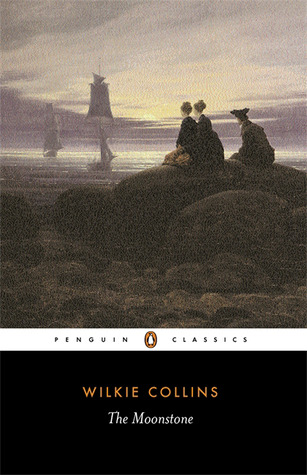Given that Caleb Carr’s latest novel, The Legend of Broken, was released in paperback last month, I’ve decided to spend this week overviewing how philosophers and physicians of the Dark Ages (the time period in which the novel was set, typically considered to span the fourth or fifth century A.D. to the eleventh century A.D.) believed the human mind and brain functioned. To quickly recap what was covered during Part One earlier this week, throughout this period it was generally believed that cognitive processes such as mental imagery and memory (known as particular knowledge) took place in a three-part ventricular system located in the brain. As this theory of the inner senses was the most widely cited theory of human cognition between approximately the fourth and sixteenth centuries A.D., we are returning to the theory today to discuss how it allowed medieval physicians to account for phenomena such as dreaming, and to eventually provide an explanation for certain types of mental illness as well.
However, before diving straight back into the theory of the inner senses, we first need to overview Hippocrates’ humors theory, which was perhaps the most influential theory of medicine prior to the modern age, with aspects still widely believed well into the eighteenth century. Between approximately the twelfth and sixteenth centuries A.D., the theory of the inner senses was typically combined with the humors theory by scholars such as Avicenna who took the strengths and weaknesses of both into consideration in order to produce a unified theory of human cognition that would explain individual differences in cognitive functioning (e.g., memory ability), personality differences, and mental illness. Prior to this point, however, the two theories appear to have remained fairly separate, so in order to understand how mental illness was perceived and treated during the earlier time period under consideration here, we need to overview the theories separately.
Hippocrates (460 B.C. to 377 B.C.), a prominent Greek physician, proposed that the human body contained a balance of four humors (fluids) that were thought to correspond to the four elements put forward in Empedocles’ theory of matter, another highly influential theory during Hippocrates’ time. The four humors in Hippocrates’ theory included blood (corresponding to fire), phlegm (corresponding to water), black bile (corresponding to earth), and yellow bile (corresponding to air). According to Hippocrates, illness was due to imbalances among the humors, and symptoms of illness therefore provided an indication of which humors were in excess within the body and which were lacking. As a result, the treatments Hippocrates provided involved either draining an excess of a problematic humor (e.g., bloodletting) or providing medicines to increase a humor that was lacking.
Although Hippocrates was of a considerably earlier period than that under consideration here, he also believed that “from the brain, and the brain only, arise our pleasures, joys, laughter, and jests, as well as our sorrows, pains, grief, and tears”, and consequently he adapted his theory to account for certain types of mental illnesses as well. He believed that madness, for example, was due to the brain being abnormally moist with either phlegm or yellow bile. He claimed that you could distinguish those mad with an excess of phlegm as being quiet, suffering memory loss, and experiencing “causeless distress and anguish” due to the brain being “chilled and contracted contrary to custom”. Conversely, those mad with an excess of yellow bile were said to be “noisy, evil-doing, and restless”.
 The humors theory was also extended to dream interpretation. For example, the Roman physician Galen (129 A.D. to 217 A.D.), whose ideas we identified in Part One as being highly influential in the development of the theory of the inner senses, suggested that our dreams could also be used as indicators of which humors were in excess or shortage, as well as of their quality. In his influential On Diagnosis from Dreams, a work referenced in The Legend of Broken, Galen stated: “Someone dreaming a conflagration is troubled by yellow bile, but if he dreams of smoke, or mist, or deep darkness, by black bile. Rainstorm indicates that cold moisture abounds; snow, ice, and hail, cold phlegm.” It should be noted that Galen did acknowledge that not all dreams should be taken as indicators of disease. He also specified that dreams could arise from things done or thought about during waking hours, and even made a case for prophetic dreams. In Galen’s view, all of these elements would need to be taken into consideration by physicians during the diagnosis of humor imbalances on the basis of a patient’s dreams. In addition, Galen also suggested that imbalances in the humors could account for individual differences in personality. He proposed that phlegmatic individuals suffer from an excess of phlegm, argumentative individuals suffer from an excess of yellow bile, melancholy or depressive individuals suffer from an excess of black bile, and sanguine individuals suffer from an excess of blood.
The humors theory was also extended to dream interpretation. For example, the Roman physician Galen (129 A.D. to 217 A.D.), whose ideas we identified in Part One as being highly influential in the development of the theory of the inner senses, suggested that our dreams could also be used as indicators of which humors were in excess or shortage, as well as of their quality. In his influential On Diagnosis from Dreams, a work referenced in The Legend of Broken, Galen stated: “Someone dreaming a conflagration is troubled by yellow bile, but if he dreams of smoke, or mist, or deep darkness, by black bile. Rainstorm indicates that cold moisture abounds; snow, ice, and hail, cold phlegm.” It should be noted that Galen did acknowledge that not all dreams should be taken as indicators of disease. He also specified that dreams could arise from things done or thought about during waking hours, and even made a case for prophetic dreams. In Galen’s view, all of these elements would need to be taken into consideration by physicians during the diagnosis of humor imbalances on the basis of a patient’s dreams. In addition, Galen also suggested that imbalances in the humors could account for individual differences in personality. He proposed that phlegmatic individuals suffer from an excess of phlegm, argumentative individuals suffer from an excess of yellow bile, melancholy or depressive individuals suffer from an excess of black bile, and sanguine individuals suffer from an excess of blood.
Even though the theory of the inner senses would not be unified with the humors theory until the twelfth century, aspects of the theory could still be seen as being compatible with some of Galen’s ideas, particularly those related to dreaming. Specifically, although the theory of the inner senses proposed that particular knowledge was stored in the ventricles of the brain, thereby providing a physiological basis for most basic cognitive functions, the theory also proposed that when humans were awake, the ventricular system was under the direct control of the mind/soul, a faculty that was not believed to be constrained to the body1 that was responsible for higher-order functions (known as universal knowledge) such as consciousness, free will, and abstract reasoning. When an individual was asleep, the ventricles were not assumed to be under the control of the mind/soul and spontaneous perception of any images retained in the first ventricle’s image store or the second ventricle’s cogitative faculty were therefore responsible for the production of dreams. This view could be seen as complementary to Galen’s ideas that dreams can arise from things that had been thought about during waking hours, and it is not difficult to see how medieval physicians may not have necessarily seen the two prominent theories as being incompatible.
In addition to the theory that mental illness arose from humor imbalances, the theory of the inner senses was also employed during the Dark Ages to explain various types of mental illness through the same mechanism proposed to explain the origins of dreams. That is, the ventricles of the brain were not thought to be under the direct control of the mind/soul in individuals believed to be insane or deranged. For example, if the cogitative faculty of the second ventricle, responsible for reorganising images passed from the first ventricle into new forms, was operating independently from the mind/soul, hallucinations were thought to arise. In addition to providing an explanation for mental illness, perhaps the reason why both the theory of the inner senses and the humors theory were so well-received during the Dark Ages was that both theories provided medieval physicians with explanations for why injuries to the head could produce psychological deficits, something earlier theories that placed the cognitive faculties in other organs of the body (such as the heart) could not.
The idea that the mentally ill were regarded as being possessed by the devil or under the influence of witchcraft pervade modern notions about psychology during the Dark Ages. As should be clear from the preceding discussion, this generalisation is not entirely accurate although it does contain a measure of truth, with certain disorders such as epilepsy indeed being attributed to demonic possession throughout the period. Although these attributions became less prevalent in the later Middle Ages once the humors theory and the theory of the inner senses had been reconciled, demonic possession and witchcraft were still provided as explanations for unusual cases such as when an individual explicitly claimed to be possessed by a demon or to be acting under the influence of a witch. Nonetheless, the notion that such individuals were tortured or punished (e.g., burnt at the stake) is completely inaccurate.
Even though medical practitioners were not consciously trying to punish the mentally ill during the Dark Ages, many of the treatments for mental disorders during this period were not pleasant and some treatments such as head surgery and bloodletting may have even been both harmful and painful. Other treatments included dietary changes to influence the humors, baths, exposure to peaceful scenes and music, sexual diversions for “lovesickness”, and exorcism for cases thought to be due to demonic possession. As few of these would likely have produced any helpful effects, long-term neglect and lack of care for the mentally ill were common, especially for those individuals whose families lacked the means to provide them with the kind of care provided at the time by institutions such as monasteries.
The theory of the inner senses would remain the dominant theory of cognitive functioning until the mid-sixteenth century when Andreas Vesalius conducted thorough anatomical investigations that ultimately disproved the physiological basis of the theory. Although Vesalius recognised the implications of his work for the theory, he lacked any alternative explanation for how the brain could perform the processes ascribed to it and retained the idea that the cerebral ventricles were still somehow responsible for cognitive functioning. The humors theory, on the other hand, continued to be widely accepted through to the late eighteenth century in spite of the complete lack of evidence for its basic tenants. It would not be until the nineteenth and twentieth centuries that a systematic attempt to understand how human cognition maps onto the brain would take place, the advent of which would go on to revolutionise the study of psychology and our understanding of the mind.
Footnotes
1. See the first footnote of Part One for a brief explanation of why I have treated the terms mind and soul in a relatively interchangeable way throughout this blog.
Sources
- Hunt, M. (2007). The Story of Psychology. United States: Anchor Books.
- Kemp, S. (1998). Medieval theories of mental representation. History of Psychology, 1(4), 275-288.
- Kemp, S. (2000). Psychology: The middle ages. In A. E. Kazdin (Ed.), Encyclopedia of Psychology (Vol. 6, pp. 382-385). Washington D.C., United States: American Psychological Association.
- Kemp, S. (1993). The medieval theory of the inner senses. American Journal of Psychology, 106(4), 559-576.
- Medicina Antiqua. (2007). Translation of Galen, On Diagnosis from Dreams. Link.
- Rosenzweig, M. R., Breedlove, S. M., & Leiman, A. L. (2002). Biological Psychology. Massachusetts, United States: Sinauer Associates, Inc.



